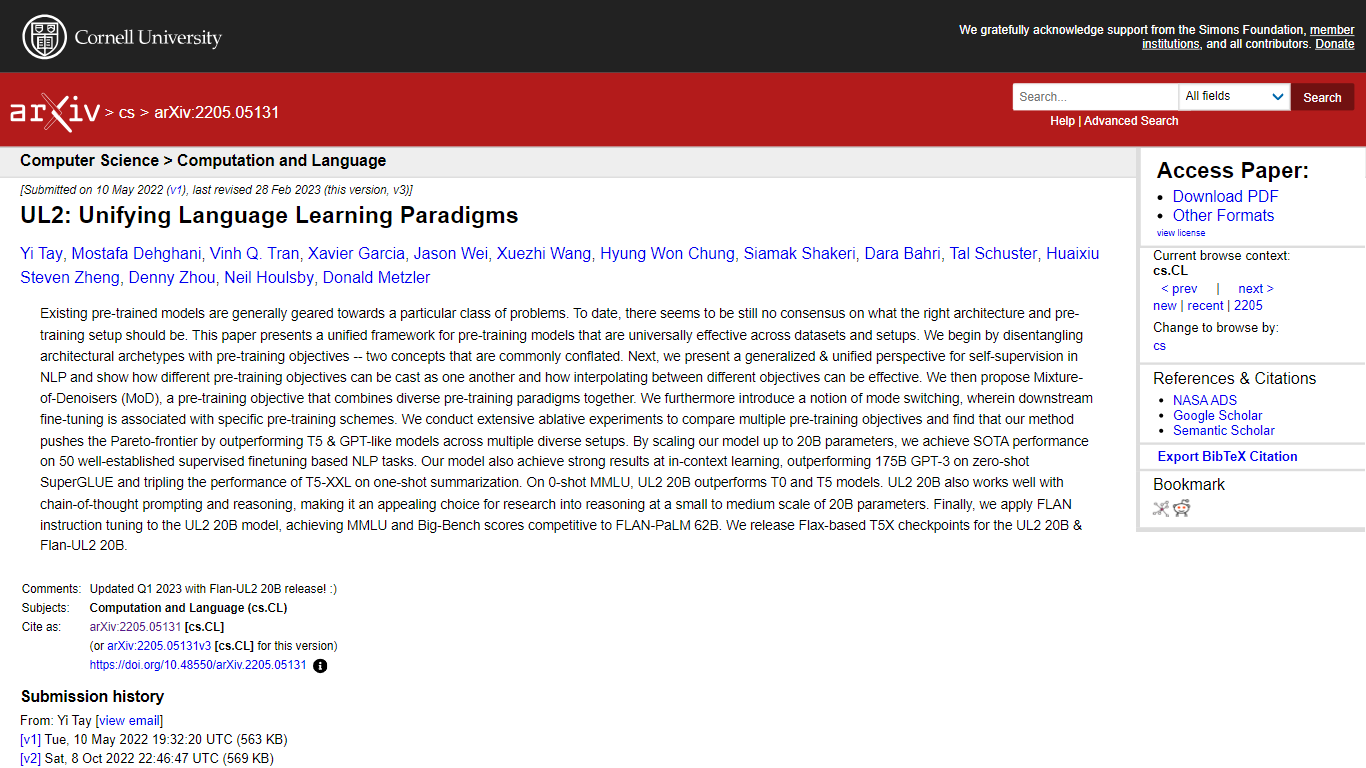UL2 vs ggml.ai
When comparing UL2 vs ggml.ai, which AI Large Language Model (LLM) tool shines brighter? We look at pricing, alternatives, upvotes, features, reviews, and more.
In a comparison between UL2 and ggml.ai, which one comes out on top?
When we put UL2 and ggml.ai side by side, both being AI-powered large language model (llm) tools, Interestingly, both tools have managed to secure the same number of upvotes. Join the aitools.fyi users in deciding the winner by casting your vote.
Not your cup of tea? Upvote your preferred tool and stir things up!
UL2

What is UL2?
The research paper titled "UL2: Unifying Language Learning Paradigms" focuses on creating a comprehensive framework for pre-training language models that excel across various datasets and setups, confronting the challenge that existing pre-trained models are often specialized for specific types of problems. The authors, Yi Tay, and team, have disentangled architectural archetypes from pre-training objectives to present a broadened self-supervision perspective within NLP. A novel pre-training objective named Mixture-of-Denoisers (MoD) is introduced, blending different pre-training approaches. Additionally, the paper explores mode switching, which ties downstream fine-tuning to definite pre-training methods.
Through rigorous experimentation, the authors demonstrate that their method, especially when scaled up to 20B parameters, gains state-of-the-art (SOTA) accolades on 50 known NLP tasks and showcases impressive in-context learning capabilities, outshining models like GPT-3 and T5 in various benchmarks. The team has publicly released Flax-based T5X checkpoints for their UL2 20B & Flan-UL2 20B models, a significant contribution for NLP research and application.
ggml.ai

What is ggml.ai?
ggml.ai is at the forefront of AI technology, bringing powerful machine learning capabilities directly to the edge with its innovative tensor library. Built for large model support and high performance on common hardware platforms, ggml.ai enables developers to implement advanced AI algorithms without the need for specialized equipment. The platform, written in the efficient C programming language, offers 16-bit float and integer quantization support, along with automatic differentiation and various built-in optimization algorithms like ADAM and L-BFGS. It boasts optimized performance for Apple Silicon and leverages AVX/AVX2 intrinsics on x86 architectures. Web-based applications can also exploit its capabilities via WebAssembly and WASM SIMD support. With its zero runtime memory allocations and absence of third-party dependencies, ggml.ai presents a minimal and efficient solution for on-device inference.
Projects like whisper.cpp and llama.cpp demonstrate the high-performance inference capabilities of ggml.ai, with whisper.cpp providing speech-to-text solutions and llama.cpp focusing on efficient inference of Meta's LLaMA large language model. Moreover, the company welcomes contributions to its codebase and supports an open-core development model through the MIT license. As ggml.ai continues to expand, it seeks talented full-time developers with a shared vision for on-device inference to join their team.
Designed to push the envelope of AI at the edge, ggml.ai is a testament to the spirit of play and innovation in the AI community.
UL2 Upvotes
ggml.ai Upvotes
UL2 Top Features
Generalized Framework: A unified framework that works universally across various NLP datasets and setups.
Mixture-of-Denoisers: A novel pre-training objective that integrates diverse pre-training methods.
Mode Switching: Connecting fine-tuning processes with specific pre-training approaches.
SOTA Performance: Supersedes established models like T5 and GPT-3 on multiple NLP tasks at different scales.
Public Availability: Releases of Flax-based T5X checkpoints for the UL2 20B and Flan-UL2 20B models.
ggml.ai Top Features
Written in C: Ensures high performance and compatibility across a range of platforms.
Optimization for Apple Silicon: Delivers efficient processing and lower latency on Apple devices.
Support for WebAssembly and WASM SIMD: Facilitates web applications to utilize machine learning capabilities.
No Third-Party Dependencies: Makes for an uncluttered codebase and convenient deployment.
Guided Language Output Support: Enhances human-computer interaction with more intuitive AI-generated responses.
UL2 Category
- Large Language Model (LLM)
ggml.ai Category
- Large Language Model (LLM)
UL2 Pricing Type
- Freemium
ggml.ai Pricing Type
- Freemium
